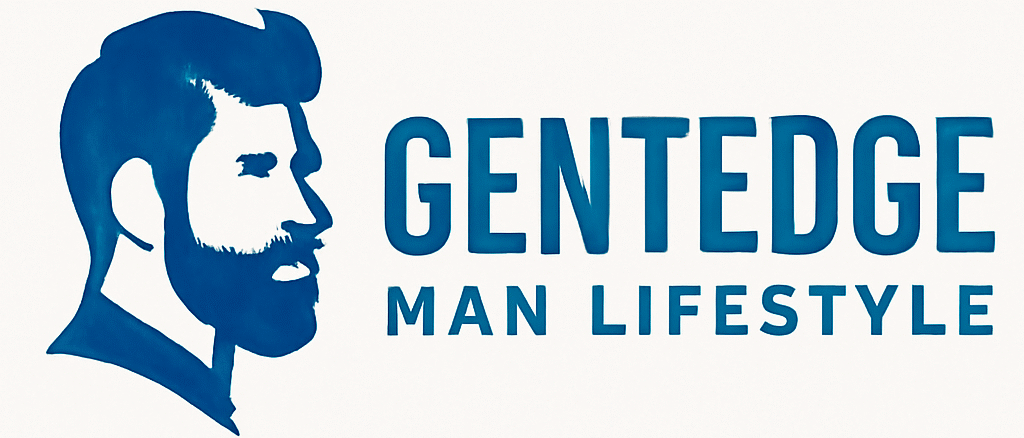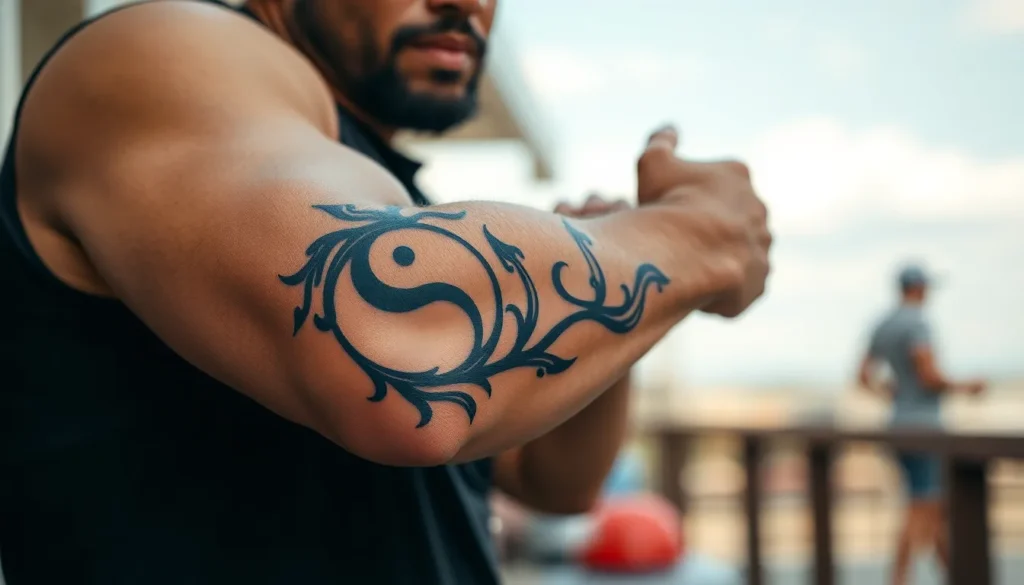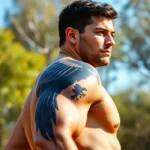The yin yang symbol represents one of life’s most profound concepts – the perfect balance between opposing forces. For men seeking meaningful body art that reflects their inner wisdom and personal philosophy yin yang tattoos offer a timeless design that’s both spiritually important and visually striking.
We’ve seen countless men choose this ancient Chinese symbol to represent their journey toward balance and harmony. Whether you’re drawn to its philosophical meaning or simply appreciate its elegant aesthetic yin yang tattoos work beautifully on various body placements and can be customized to reflect your unique style.
From minimalist black ink designs to elaborate artistic interpretations incorporating dragons flames or geometric patterns the possibilities are endless. We’ll explore the most popular yin yang tattoo variations for men placement ideas and design elements that can transform this classic symbol into your perfect piece of personal art.
Understanding the Ying Yang Symbol and Its Masculine Appeal
The yin yang symbol carries profound meaning that resonates deeply with men seeking tattoos that represent their life philosophy. We’ll explore the rich history and masculine appeal of this timeless design.
Ancient Origins and Philosophical Meaning
The yin yang symbol originated in ancient Chinese philosophy over 3,000 years ago as part of Taoist teachings. Philosophers developed this concept to explain how opposite forces create harmony in the natural industry. The symbol represents the eternal dance between complementary energies that exist in all aspects of life.
Traditional Chinese medicine practitioners used yin yang principles to understand health and wellness balance. The dark section (yin) symbolizes feminine energy, passivity, and introspection, while the light section (yang) represents masculine energy, action, and external expression. Each half contains a small circle of its opposite, demonstrating that pure extremes don’t exist in nature.
Ancient texts describe yin yang as the fundamental principle governing all existence, from seasonal changes to human relationships. The symbol’s circular form represents the cyclical nature of life, death, and rebirth that continues infinitely.
Why Men Choose Ying Yang Tattoos
Men gravitate toward yin yang tattoos because they represent the complexity of masculine identity in modern society. The design allows guys to acknowledge both their strength and vulnerability without compromising their masculine image. Many men choose this symbol to honor their journey toward emotional maturity and self-awareness.
Professional athletes often select yin yang tattoos to represent the balance between intense competition and mental peace required for peak performance. Business leaders incorporate these designs to symbolize their ability to make tough decisions while maintaining compassion and wisdom.
Veterans frequently choose yin yang tattoos to process their experiences with conflict and peace, representing their transition from warrior to civilian life. The symbol helps them express the duality of their service experience and personal growth.
Symbolism of Balance and Duality
Balance represents the core appeal of yin yang tattoos for men who navigate multiple roles in their daily lives. The symbol acknowledges that strength comes from accepting both light and dark aspects of personality rather than suppressing either side. Modern men use this imagery to represent their roles as providers and nurturers, leaders and followers.
Duality in yin yang tattoos speaks to men who’ve experienced important life transitions or personal challenges. The design represents their understanding that success requires both action and patience, confidence and humility. Many men choose this symbol after overcoming addiction, divorce, or career setbacks to mark their personal transformation.
The interconnected nature of the two halves resonates with men in relationships, representing the balance between independence and partnership. Fathers often choose yin yang tattoos to symbolize their protective nature balanced with gentleness toward their children.
Traditional Black and White Ying Yang Designs
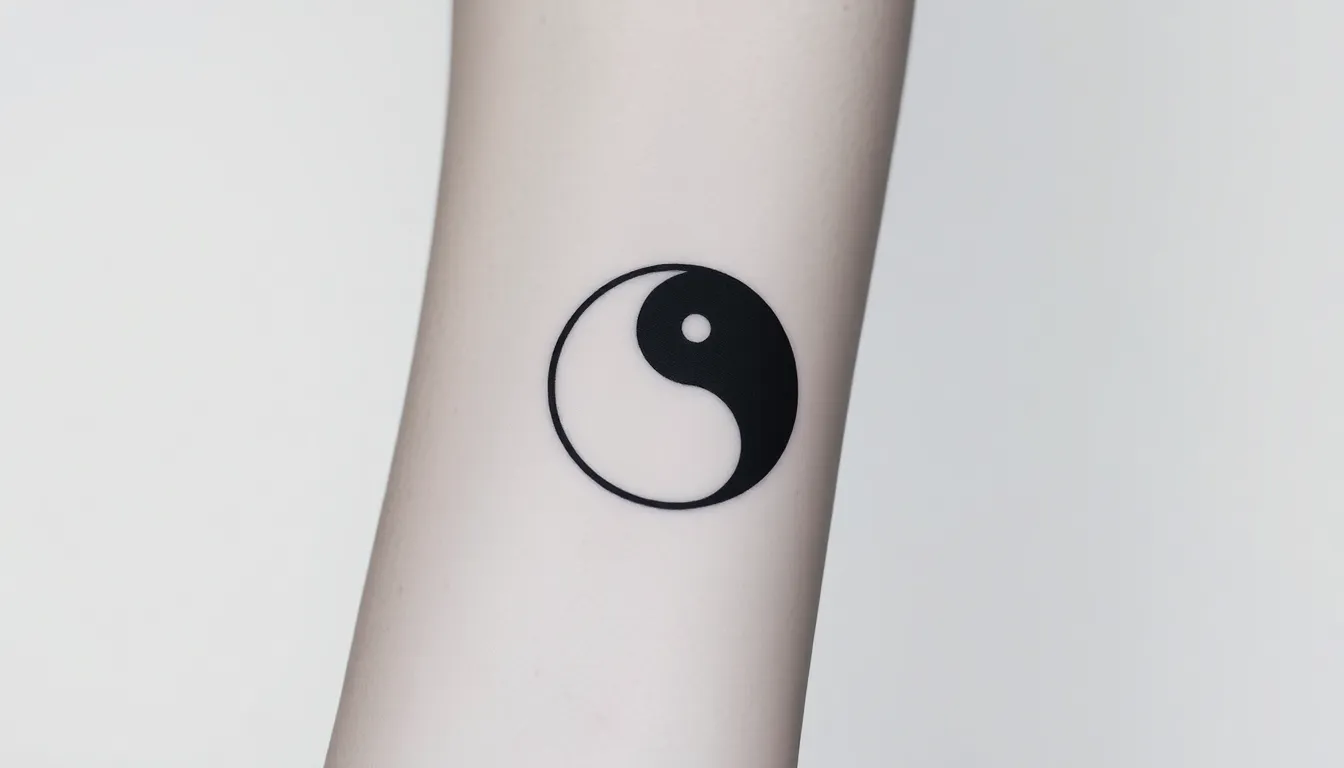
Traditional black and white ying yang tattoos honor the original 3rd century Chinese philosophy through their classic coloration and timeless appeal. These designs maintain the fundamental visual elements that make this ancient symbol instantly recognizable across cultures.
Classic Circular Formations
Classic circular ying yang tattoos preserve the essential shape that represents life’s cyclical nature and universal balance. The circular formation ensures continuous flow between opposing forces, creating visual harmony that’s both striking and meaningful. We see these designs maintaining perfect symmetry with the black side (yin) containing its small white dot and the white side (yang) housing its contrasting black dot. This traditional approach emphasizes the Taoist belief that each force carries the seed of its opposite within itself. Men choose circular formations because they’re visually straightforward yet deeply symbolic, offering timeless recognition that transcends cultural boundaries.
Minimalist Approaches for Men
Minimalist ying yang tattoos focus exclusively on essential design elements without additional embellishments or decorative features. These streamlined versions stick to the basic black and white motif while maintaining profound philosophical meaning through elegant simplicity. We find minimalist designs particularly appealing for their subtle sophistication and clean aesthetic that works well in professional environments. Small sizes make these tattoos perfect for discrete placement while still delivering powerful symbolic impact. Men gravitate toward minimalist approaches when they want meaningful body art that doesn’t dominate their overall appearance but still represents their personal philosophy of balance.
Placement Considerations for Traditional Styles
Placement decisions for traditional ying yang tattoos depend on desired visibility and personal significance of the symbol’s meaning.
Popular placement options include:
| Location | Benefits | Visibility Level |
|---|---|---|
| Wrists and forearms | Close to energy flow and daily actions | High |
| Chest or back | Allows larger, detailed designs | Medium to Low |
| Shoulder or upper arm | Easy to cover when needed | Medium |
Wrists and forearms offer symbolic connection to one’s actions and energy while providing excellent visibility for daily reflection. Chest and back placements accommodate larger traditional designs that can incorporate more detailed symbolic elements. Shoulder and upper arm locations provide flexibility for men who want meaningful tattoos that remain professional when covered. We recommend considering how the circular shape will work with your chosen body area’s natural contours to ensure the design maintains its balanced proportions.
Modern Tribal Ying Yang Tattoo Variations

Contemporary artists have revolutionized the classic yin yang by infusing it with bold tribal aesthetics that amplify masculine energy. These modern interpretations blend ancient symbolism with aggressive geometric patterns to create striking designs that resonate with today’s men.
Bold Tribal Patterns and Linework
Thick black linework forms the foundation of modern tribal yin yang designs, replacing delicate curves with powerful geometric shapes. Artists create aggressive patterns using spikes, interlocking forms, and sharp angular elements that maintain the symbol’s essential balance while adding visual impact.
Symmetrical patterns often mirror each half of the design, reinforcing the yin yang’s inherent duality through artistic technique. Heavy outlines and solid black fills create contrast that makes these tattoos stand out dramatically against skin. Flowing tribal elements connect the opposing sections seamlessly, ensuring the design maintains its symbolic unity even though the bold styling.
Modern tribal artists frequently incorporate curved spikes and flame-like projections that radiate from the central division. These elements add movement and energy to the static circular form while preserving the essential meaning of opposing forces in harmony.
Incorporating Masculine Tribal Elements
Dragons emerge as popular additions to tribal yin yang designs, with their serpentine forms naturally following the curved division between opposing sections. These mythical creatures symbolize strength and wisdom, complementing the balance represented by the core symbol. Tribal-styled phoenixes can occupy one half while dragons fill the other, creating powerful narratives about rebirth and transformation.
Sharp tribal edges replace traditional smooth curves in many masculine interpretations, giving the design an aggressive aesthetic that appeals to men seeking bold body art. Flame motifs work particularly well within the yang section, representing active masculine energy through tribal-style fire patterns.
Animal-inspired tribal shapes like scorpions or wolves can be integrated into the design’s negative space, adding personal meaning while maintaining the yin yang’s essential structure. These elements allow men to customize their tattoos with symbols that reflect their individual stories and characteristics.
Geometric tribal borders often frame the entire design, creating a structured appearance that emphasizes the tattoo’s masculine appeal while honoring traditional tribal art forms.
Size and Positioning for Maximum Impact
Large canvas areas like the chest and back accommodate the most detailed tribal yin yang designs, allowing artists to incorporate complex linework and intricate tribal elements. These placements provide enough space for elaborate dragons, phoenixes, or other symbolic additions that enhance the core meaning.
Arms and shoulders offer excellent visibility for tribal yin yang tattoos, with the natural muscle definition complementing bold tribal patterns. Upper arm placement works particularly well for designs featuring thick tribal linework that follows the arm’s natural contours.
Thigh and calf positions accommodate substantial tribal artwork while allowing for discretion when needed. These areas provide sufficient surface area for meaningful large-scale designs that incorporate multiple tribal elements around the central yin yang motif.
Smaller placements like wrists and ankles suit simplified tribal yin yang designs that maintain impact through bold linework rather than intricate detail. These positions offer subtle reminders of balance and duality while fitting professional environments that require conservative appearance standards.
Back shoulder blade placement creates an ideal canvas for asymmetrical tribal designs that extend beyond the circular yin yang form, allowing for creative tribal elements that flow with the body’s natural lines.
Ying Yang Tattoos with Dragon Motifs
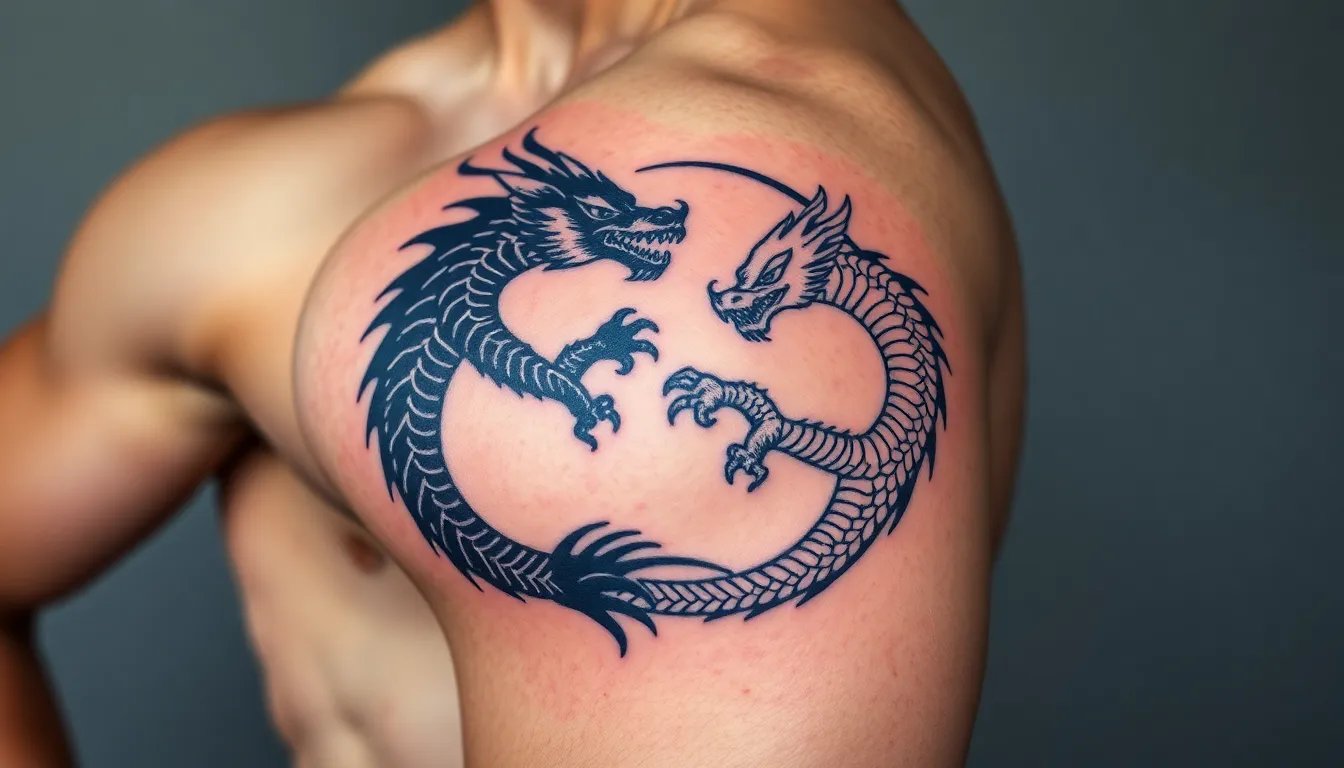
Dragon motifs transform the traditional yin yang design into a powerhouse of masculine symbolism that resonates deeply with men seeking spiritual balance and strength. These designs merge Eastern philosophy with the raw power of dragon imagery to create tattoos that speak to both the soul and the warrior spirit.
Eastern Dragon Integration Techniques
Artists typically create these powerful designs by having two dragons form the circular yin yang shape, with each dragon occupying one half of the symbol. One dragon features darker tones to represent yin energy while the other displays lighter tones for yang energy. The dragons intertwine in ever-changing poses that emphasize the continuous flow and balance of opposing forces.
Traditional Eastern artistic styles guide these integrations through fine line work, intricate scale patterns, and flowing cloud or wave motifs. Dragons curve naturally around the circular form, their bodies creating the distinctive S-shaped division that separates yin from yang. Some artists position dragon heads at opposite points of the circle, symbolizing the eternal chase between opposing forces.
Advanced techniques involve layering dragon elements within each half of the symbol, creating depth and movement that brings the design to life. Scales transition seamlessly from dark to light across the dividing line, reinforcing the gradual shift between energies. Whiskers, claws, and flowing manes add intricate details that showcase the artist’s skill while maintaining the symbol’s balanced proportions.
Symbolic Meaning of Dragon and Ying Yang Combination
This combination represents the ultimate balance between cosmic forces and earthly power, creating a profound emblem of life’s harmony. The yin yang element conveys unity in opposites with yin as feminine, dark, and passive energy, while yang embodies masculine, light, and active energy. Dragons add powerful layers of meaning by representing courage, strength, and heavenly forces that complement the yin yang’s spiritual dualism.
Together, these symbols express mastery over nature’s powerful forces while acknowledging the need for balance in all aspects of life. Eastern culture views dragons as both celestial and earthly beings, making them perfect companions to the yin yang’s representation of duality. The dragon’s association with good luck and control over potent energies amplifies the tattoo’s significance for men seeking to channel their inner strength.
Men choose this combination to reflect their complex identities, acknowledging both their nurturing and protective instincts. The design speaks to those who understand that true strength comes from balance, not from suppressing one aspect of their nature. Veterans, business leaders, and athletes particularly connect with this symbolism as it represents their experiences with both competition and cooperation.
Color Schemes and Artistic Styles
Traditional color schemes follow the classic black and white yin yang theme, creating stark contrast that emphasizes the balance between opposing forces. Black ink represents the yin dragon while leaving the yang dragon in skin tone or light gray shading. This approach honors the original symbolism while allowing the dragon details to shine through careful shading and line work.
Enhanced color palettes incorporate red, gold, or blue accents that reflect the dragon’s vitality and spiritual significance. Red often highlights the yang dragon’s fire and passion, while blue or gold emphasizes the yin dragon’s wisdom and depth. These colors flow seamlessly across the design, creating gradients that reinforce the symbol’s message of interconnected energies.
Artistic styles range from photorealistic depictions with detailed shading and individual scales to stylized tribal forms that emphasize symbolic shapes and flow. Smooth gradients and swirling lines reinforce the sense of motion inherent in both yin yang and dragon imagery. Neo-traditional approaches blend classic tattoo techniques with modern color theory, creating designs that honor tradition while embracing contemporary aesthetics.
Watercolor techniques add movement and energy to dragon yin yang tattoos through splashes of color that seem to flow beyond the circular boundary. Blackwork styles focus on bold line work and negative space to create striking contrasts that emphasize the duality theme. Geometric interpretations break down dragon forms into angular patterns while maintaining the essential balance of the yin yang structure.
Geometric and Abstract Ying Yang Interpretations
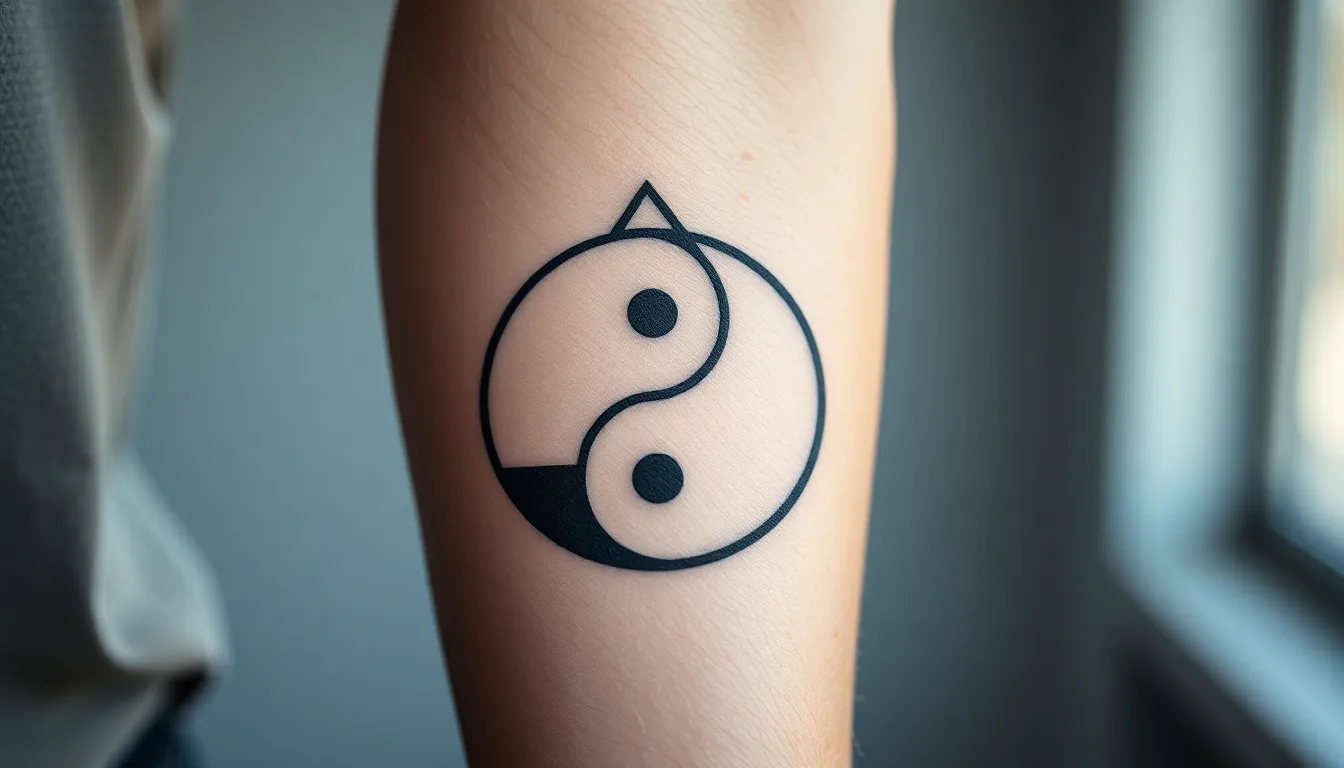
Modern tattoo artists have revolutionized the traditional ying yang symbol through innovative geometric and abstract approaches. These contemporary interpretations maintain the symbol’s core meaning while adding visual complexity and personal expression.
Contemporary Geometric Patterns
Clean lines and minimalist design elements define modern geometric ying yang tattoos that appeal to style-conscious men. Symmetrical patterns emphasize the balance concept through precise angles and mathematical proportions that create visual harmony. Artists integrate triangular shapes, hexagonal borders, and linear elements that frame the traditional circular form without overwhelming its essence.
Sharp contrasts between geometric sections enhance the duality concept through alternating patterns and textures. We see designs incorporating dot work, line shading, and negative space techniques that add depth while maintaining simplicity. Modern interpretations often feature interlocking geometric shapes that represent the interconnected nature of opposing forces.
Nature-inspired geometric elements like stylized leaves, angular mountains, or crystalline formations blend organic concepts with structured design. These patterns symbolize growth and harmony while appealing to men who appreciate both natural beauty and architectural precision.
Abstract Artistic Approaches
Watercolor techniques transform the traditional ying yang into flowing, artistic expressions that capture movement and emotion. Artists use color bleeding, gradient transitions, and splash effects to create ever-changing interpretations that feel alive and energetic. These designs often extend beyond the circular boundary, suggesting the infinite nature of balance and harmony.
Fluid brushstroke patterns replace solid fills with expressive marks that convey personal meaning and artistic flair. We observe designs incorporating paint drips, textural elements, and layered compositions that add visual interest while preserving the symbol’s recognizable form. Abstract interpretations allow for creative freedom in color choices, from monochromatic schemes to vibrant multicolored palettes.
Deconstructed approaches break the traditional ying yang into separate elements that maintain their symbolic relationship through spatial arrangement. Artists position complementary shapes, colors, or textures in ways that suggest the classic symbol without literally depicting it.
Incorporating Sacred Geometry Elements
Sacred geometry patterns like the Flower of Life and Seed of Life add profound spiritual significance to ying yang tattoos. These fundamental forms represent the mathematical principles underlying creation itself, improving the symbol’s theme of universal balance and interconnectedness. Artists integrate these patterns as background elements, border designs, or central features that complement the ying yang’s circular form.
Mandala elements create intricate frameworks that contain and enhance the traditional symbol through repetitive patterns and symmetrical designs. We find designs incorporating multiple geometric layers that build outward from the central ying yang, creating complex compositions that reward close examination. These sacred patterns emphasize the belief that all existence follows mathematical principles and divine order.
Fibonacci spirals and golden ratio proportions guide the placement and sizing of design elements to create naturally pleasing compositions. Artists use these mathematical relationships to position surrounding elements, scale decorative details, and ensure harmonious proportions that feel balanced to the human eye.
Ying Yang Tattoos Combined with Other Masculine Symbols

Contemporary men often enhance their yin yang tattoos by incorporating additional masculine symbols that amplify the design’s power and personal meaning. These combinations create complex visual narratives that speak to different aspects of masculine identity and life experience.
Wolf and Animal Spirit Combinations
Wolf designs paired with yin yang symbols create powerful representations of primal strength balanced with inner wisdom. These combinations typically feature wolves positioned around or integrated within the classic circular design, emphasizing themes of loyalty, leadership, and connection to nature. Artists often use the wolf’s natural duality—fierce hunter yet devoted pack member—to mirror the yin yang’s balance between opposing forces.
Animal spirit combinations extend beyond wolves to include bears, eagles, and lions, each bringing distinct masculine qualities to the design. Bears represent protective strength and grounding energy, while eagles symbolize vision and freedom, perfectly complementing the yin yang’s message of balanced perspective. Lions add themes of courage and nobility, creating tattoos that speak to leadership qualities and personal sovereignty.
Nature elements like trees, mountains, or moon phases frequently accompany these animal combinations. These additions reinforce man’s connection to natural cycles and his place within the greater network of life. The resulting designs celebrate both wild instincts and civilized wisdom, making them particularly appealing to men who value their connection to the natural industry.
Skull and Dark Theme Integrations
Skull imagery combined with yin yang symbols creates striking contrasts that explore life’s ultimate dualities. These designs highlight the balance between mortality and eternity, darkness and light, creating powerful visual statements about accepting life’s inevitable cycles. Artists often position skulls within one half of the yin yang or surround the entire symbol with skull motifs to emphasize these themes.
Gothic elements like ravens, thorns, or cemetery imagery add layers of meaning to these dark combinations. Ravens symbolize wisdom gained through difficult experiences, while thorns represent protection through adversity, both concepts that align with the yin yang’s teaching about finding balance in opposition. These elements create tattoos that acknowledge life’s darker aspects while celebrating the wisdom gained through struggle.
Military combat imagery sometimes integrates with skull and yin yang combinations, particularly among veterans. These designs honor fallen comrades while expressing the balance between warrior duty and peaceful civilian life. The skull represents sacrifice and mortality, while the yin yang provides hope for harmony and healing after conflict.
Military and Warrior Symbol Pairings
Swords, shields, and armor frequently combine with yin yang symbols to represent balanced warrior philosophy. These designs emphasize that true strength comes from inner harmony rather than external force alone. Combat veterans often choose these combinations to express their understanding that effective leadership requires both decisive action and thoughtful restraint.
Ancient warrior symbols from various cultures add historical depth to yin yang tattoos. Samurai elements like katana swords or cherry blossoms represent the Japanese concept of balanced warrior spirit, while Celtic knots and Viking runes bring European warrior traditions into the design. These cultural fusions create unique personal statements about heritage and martial philosophy.
Modern military insignia and rank symbols sometimes integrate with yin yang designs to honor service while emphasizing balance. These combinations work particularly well for active duty personnel or veterans who want to express their commitment to both military excellence and personal growth. The yin yang reminds the wearer that even in combat situations, wisdom and restraint complement strength and aggression.
Popular Placement Options for Men’s Ying Yang Tattoos
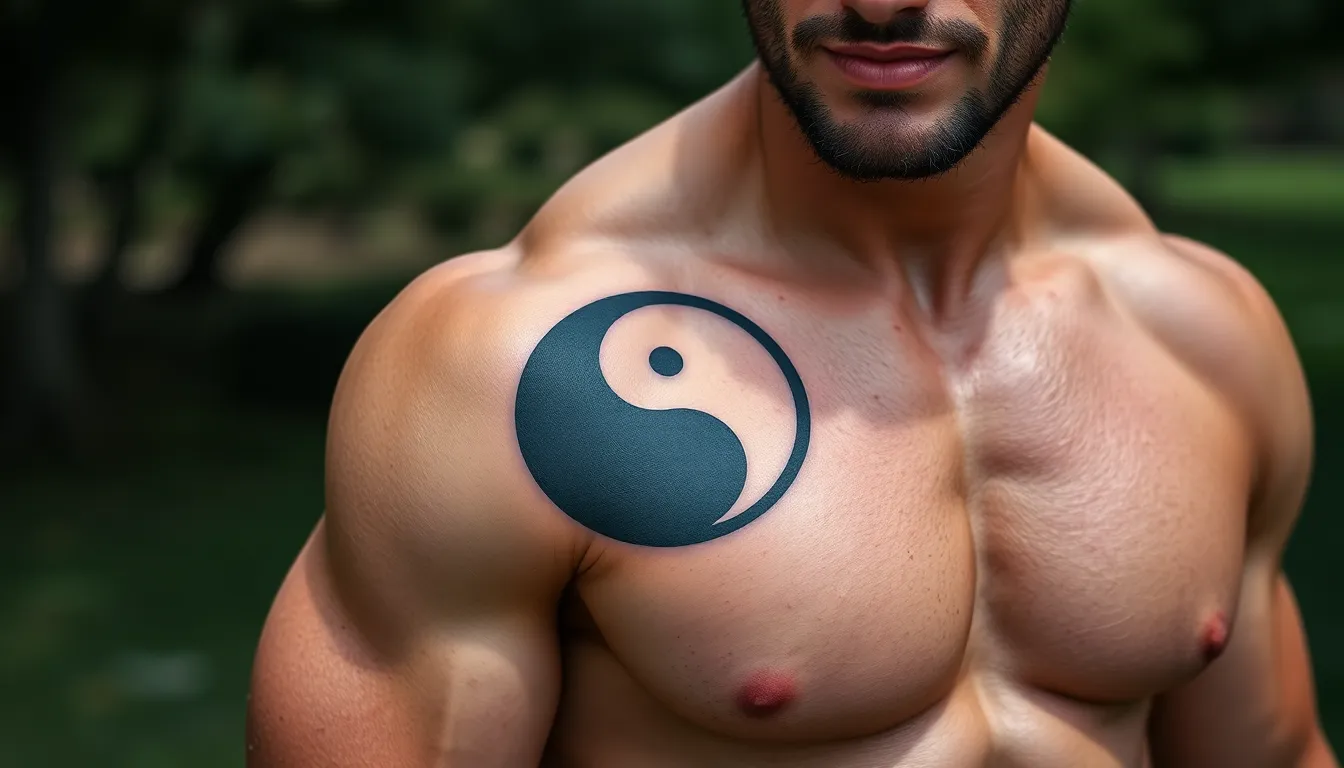
We’ve explored various design approaches for ying yang tattoos, and now it’s time to consider where these meaningful symbols work best on the male body. Placement significantly influences both the visual impact and personal significance of your ying yang tattoo.
Shoulder and Upper Arm Positioning
Shoulder and upper arm locations offer men the perfect balance between visibility and discretion for their ying yang tattoos. This placement provides ample canvas space for larger, more intricate designs or allows the symbol to integrate seamlessly into existing sleeve tattoos. Men choose this area because it showcases their belief in balance and harmony prominently while remaining easy to cover when professional situations require it.
Upper arm positioning works exceptionally well for ying yang tattoos that incorporate additional masculine elements we’ve discussed, such as dragons or tribal patterns. Bold designs thrive in this location because the natural muscle contours enhance the visual impact of the circular symbol. Professional men appreciate this placement since it offers flexibility between personal expression and workplace appropriateness.
Back and Chest Placement Strategies
Back and chest placements transform ying yang tattoos into striking centerpieces that command attention and respect. These large canvas areas suit men who want their tattoos to deliver maximum visual impact and aren’t concerned about permanent display. Center back or chest positioning creates natural symmetry that perfectly echoes the ying yang’s inherent balance and harmony.
Chest placement works particularly well for men who view their ying yang tattoo as a core part of their identity and philosophy. This location allows for impressive size variations and provides space to integrate the additional symbolic elements we’ve covered, from geometric patterns to animal spirits. Back placement offers even more creative freedom, enabling artists to create elaborate compositions that tell complete stories around the central ying yang symbol.
Forearm and Wrist Considerations
Forearm and wrist placements cater to men who prefer more subtle or easily concealable ying yang tattoos without sacrificing meaning. Wrist positioning particularly suits smaller ying yang designs, offering a meaningful yet discreet option that serves as a daily reminder of personal balance. This placement keeps the symbol close during everyday activities, reinforcing its philosophical significance in your daily life.
Forearm positioning provides enough space to add artistic flair without overwhelming the design’s essential simplicity. Men often choose this location because it allows for easy visibility when desired while remaining coverable with long sleeves. Both wrist and forearm placements work excellently with the minimalist approaches we’ve discussed, maintaining the ying yang’s powerful symbolism through elegant restraint.
Color Variations and Artistic Styles

We’ve explored various interpretations of the yin yang symbol, and now it’s time to examine how different color palettes and artistic techniques can transform this ancient symbol into a personalized masterpiece.
Traditional Black and Gray Approaches
Classic black and gray yin yang tattoos honor the original symbol from ancient Chinese philosophy with their timeless simplicity. These designs feature the traditional black and white color scheme, where the black side contains a small white dot and the white side contains a small black dot, symbolizing the interconnected nature of opposites like good and bad or light and dark.
Minimalist black and gray designs focus on clean lines and precise shading to create depth without overwhelming the symbol’s essential meaning. Artists often place these tattoos on the wrist, forearm, or chest where their universally recognizable design can be appreciated for its philosophical significance. The monochromatic approach ensures that the focus remains on the symbol’s powerful representation of balance rather than decorative elements.
Professional tattoo artists frequently recommend black and gray approaches for men who want a tattoo that will age gracefully over time. The absence of color eliminates concerns about fading or color distortion, making these designs particularly practical for long term wear.
Colorful Modern Interpretations
Contemporary yin yang tattoos incorporate vibrant colors like red, blue, and other bold hues to add personal significance and visual appeal to the traditional design. Red variations often symbolize passion or energy, transforming the yang portion into a representation of active masculine force. Blue interpretations may represent calmness or spirituality, creating a more meditative version of the classic symbol.
Artists frequently use color gradients to create smooth transitions between the yin and yang sections, adding visual movement to the static symbol. Purple and gold combinations appeal to men seeking a more luxurious aesthetic, while earth tones like brown and green connect the symbol to nature themes. These colorful approaches allow for greater customization while preserving the fundamental philosophy of balance.
Modern color techniques also include neon or electric color schemes that appeal to younger demographics seeking bold, contemporary body art. Artists can incorporate multiple colors within each section, creating complex visual narratives that reflect individual personality traits or life experiences.
Watercolor and Realistic Techniques
Watercolor yin yang tattoos feature fluid, blended colors that create an artistic, painterly effect, giving movement and life to the traditionally static symbol. This technique allows colors to bleed and blend naturally, creating unique patterns that make each tattoo one of a kind. Artists use splashes and drips of color around the main symbol to create an organic, spontaneous appearance.
Realistic techniques integrate detailed elements such as dragons, koi fish, lotus flowers, cherry blossoms, celestial bodies, or mandalas around or inside the yin yang symbol. These additions create layers of meaning, with dragons representing strength, lotus flowers symbolizing growth, and celestial elements representing universe harmony. The realistic approach showcases the tattoo artist’s skill in shading and detail work, creating three dimensional effects that make the symbol appear to emerge from the skin.
Photorealistic yin yang tattoos often incorporate texture work that mimics materials like stone, wood, or metal, adding tactile elements to the visual design. Artists combine these techniques with precise line work to create tattoos that function as both philosophical statements and artistic masterpieces.
Size Considerations for Ying Yang Tattoo Designs
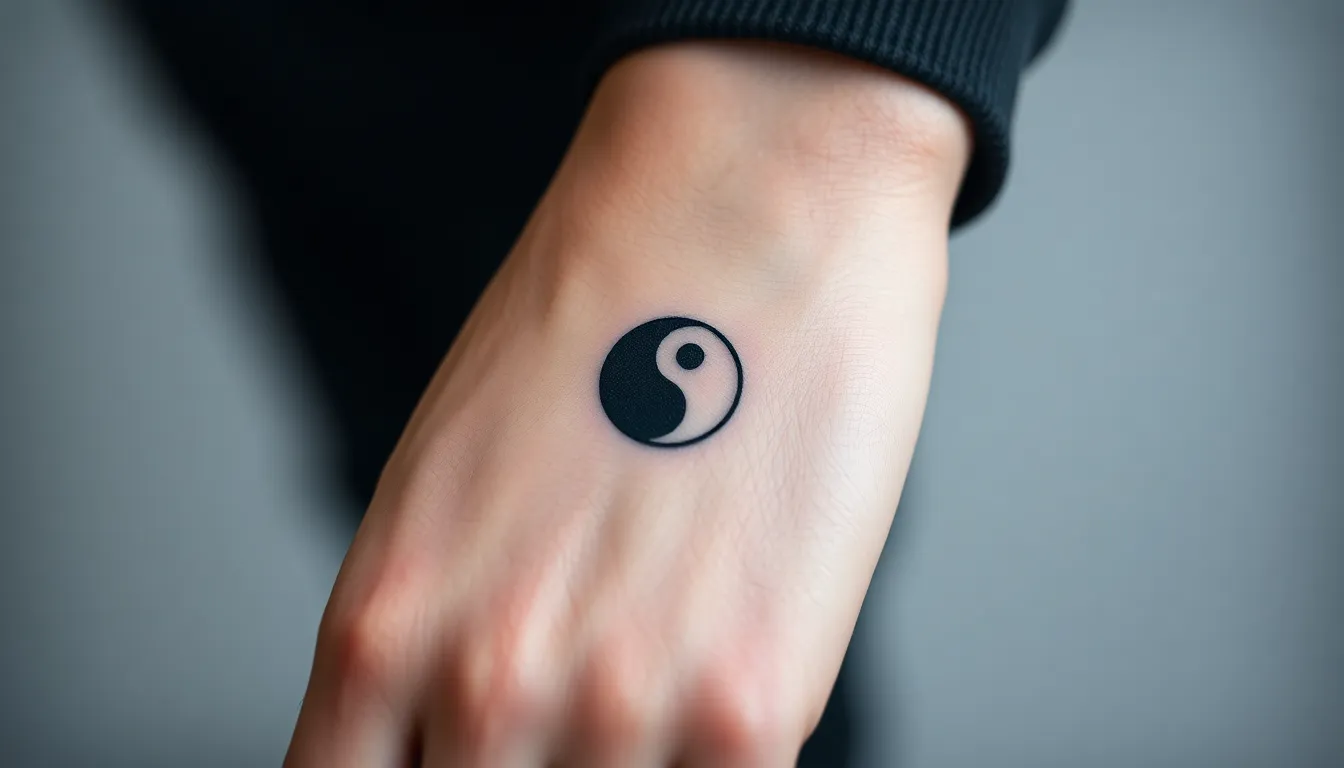
Choosing the right size for your ying yang tattoo determines both its visual impact and symbolic presence on your body. We’ll explore three distinct size categories that offer different advantages for expressing this ancient symbol’s profound meaning.
Small and Discrete Options
Small ying yang tattoos deliver powerful symbolism in compact designs that work perfectly for subtle expression. These discrete pieces typically measure 1-3 inches and use the classic black and white design to emphasize simplicity and clarity. Even though their minimal size, they represent life’s balance and the coexistence of light and dark within everyone.
Perfect placement options include wrists, fingers, or behind the ear where they can serve as quiet yet meaningful statements. Many men choose small ying yang tattoos as their first piece of body art because they’re less intimidating while still carrying deep philosophical significance. We often recommend these sizes for professional environments where discretion matters most.
Medium-Sized Statement Pieces
Medium-sized ying yang tattoos allow for enhanced detail and personalization opportunities that small designs simply can’t accommodate. These pieces typically span 4-7 inches and provide enough canvas space to incorporate complementary elements like lotus flowers, cherry blossoms, or celestial motifs such as sun and moon imagery.
Ideal placement areas include arms, chest, or calves where they balance visibility with artistic detail perfectly. Artists can add mandala patterns or geometric elements that enhance the symbolic depth while maintaining the core ying yang philosophy. We’ve seen stunning medium pieces that blend traditional Chinese elements with modern artistic techniques.
Custom color schemes work exceptionally well at this size, allowing artists to incorporate red, blue, or watercolor effects without overwhelming the design’s essential balance. These tattoos command attention while remaining sophisticated enough for various social settings.
Large Scale Dramatic Designs
Large ying yang tattoos create bold, highly detailed masterpieces that often cover areas like the back, chest, or full sleeves. These dramatic pieces typically measure 8+ inches and offer unlimited creative possibilities for incorporating complex art styles and symbolic imagery.
Dragons, floral patterns, or intricate mandala work can seamlessly blend with the ying yang symbol to create striking visual narratives. Large designs provide the perfect canvas to explore Taoist philosophy artistically while making powerful personal statements about balance and duality.
We’ve observed that large scale pieces often incorporate multiple artistic techniques, from photorealistic elements to abstract watercolor backgrounds that create stunning depth and movement. These tattoos require important time investment and higher costs, but they deliver unmatched visual impact and artistic complexity.
Placement considerations become crucial at this size, as large designs need adequate space to maintain proper proportions and visual flow across your body’s natural contours.
Choosing the Right Tattoo Artist for Your Ying Yang Design
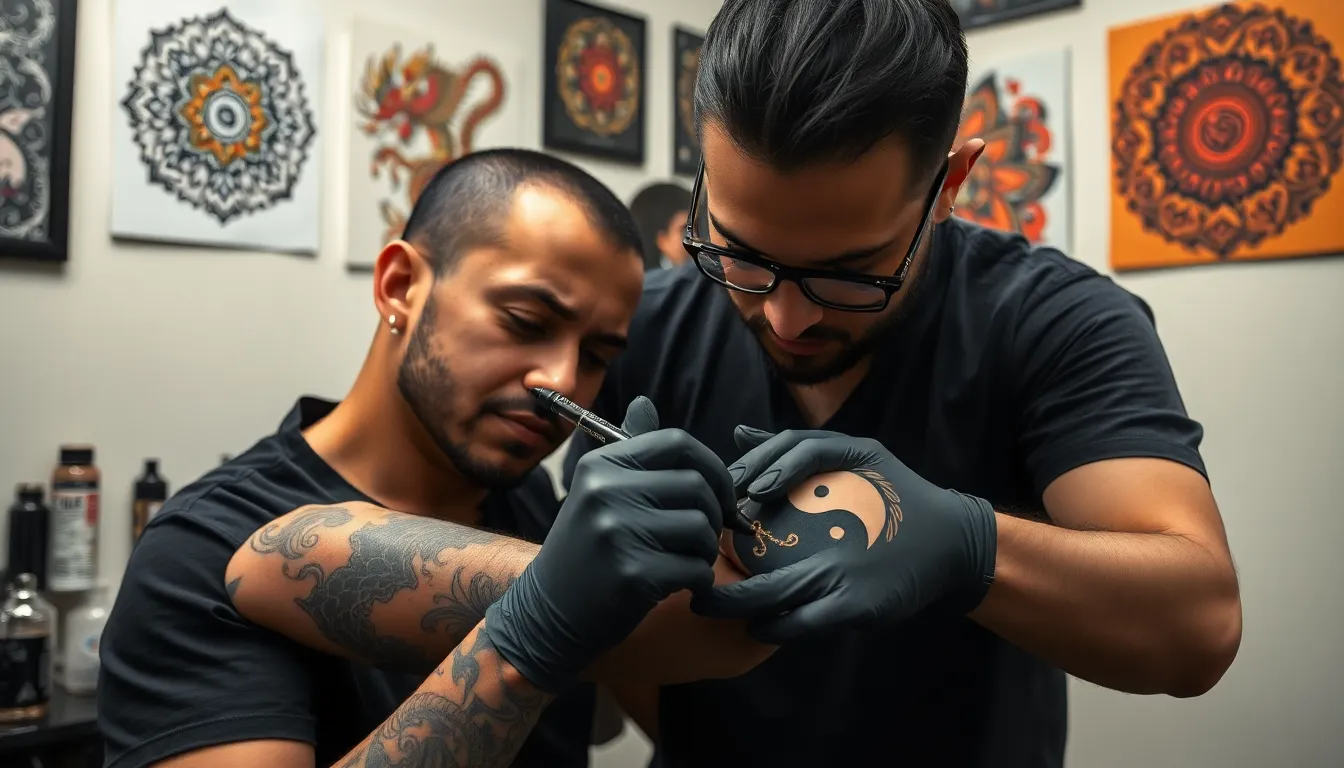
Selecting the perfect artist for your yin yang tattoo determines whether you’ll receive authentic symbolism or just another generic design. We’ll guide you through identifying specialists who understand the profound cultural significance behind this ancient symbol.
Finding Specialists in Eastern Symbolism
Search for artists with documented experience in Taoist philosophy and Eastern spiritual symbols. These practitioners understand that the yin yang represents more than visual balance—it embodies 3,000 years of Chinese philosophical wisdom about interconnected duality.
Look for tattoo shops that showcase Eastern-inspired portfolios on their websites and social media. Artists who regularly work with mandalas, lotus flowers, dragons, and Buddhist imagery demonstrate familiarity with the cultural context surrounding your chosen design.
Ask potential artists about their knowledge of Taoist principles during initial conversations. Specialists can explain how the dark yin section represents feminine energy and introspection while the light yang symbolizes masculine action and external force.
Research artists who’ve completed advanced training in traditional Asian tattooing techniques. Many respected practitioners travel to study authentic methods in China, Japan, or Southeast Asia to deepen their understanding of cultural symbolism.
Portfolio Evaluation Tips
Examine previous yin yang tattoos for precise symmetrical balance and clean circular formations. Quality work maintains the essential shape that represents life’s cyclical nature while ensuring both halves flow seamlessly together.
Study their line work quality in fine detail sections and shading gradients. Skilled artists create smooth transitions between light and dark areas without harsh edges or uneven coloring that disrupts the symbol’s harmony.
Review combinations they’ve created with complementary symbols like wolves, dragons, or geometric patterns. Versatile artists blend multiple elements while preserving the yin yang’s core meaning and visual impact.
Check for consistency across different sizes, from small 2-inch wrist pieces to large 8-inch back centerpieces. Experienced specialists adapt their technique whether creating minimalist designs or complex artistic interpretations.
Consultation and Design Process
Schedule in-person consultations to discuss your personal connection to the yin yang philosophy. Professional artists ask about your motivation, whether you’re expressing balance between strength and vulnerability or honoring life transitions.
Collaborate on customizing traditional elements with personal touches like incorporating your birth elements or meaningful colors. Skilled practitioners guide you through options while respecting the symbol’s authentic representation.
Review placement recommendations based on your lifestyle and professional requirements. Experienced artists explain how shoulder positioning works for larger tribal variations while forearm placement suits minimalist approaches.
Request detailed design sketches before committing to the final appointment. Quality specialists provide multiple concept variations, from classic black and white circles to modern geometric interpretations with watercolor techniques.
Conclusion
The yin yang tattoo continues to captivate men seeking meaningful body art that reflects their complex identities and personal philosophies. Whether you choose a traditional black and white design or opt for modern interpretations with dragons tribal elements or geometric patterns this ancient symbol offers endless possibilities for customization.
We’ve explored how placement size and artistic technique all contribute to creating a tattoo that truly resonates with your individual journey. From subtle wrist placements to bold back pieces each variation tells a unique story while honoring the timeless wisdom of balance and harmony.
Remember that selecting an experienced artist who understands the cultural significance and symbolic depth of the yin yang is crucial for achieving an authentic and meaningful result. Your tattoo should serve as a powerful reminder of life’s interconnected dualities and your own path toward inner balance.
Frequently Asked Questions
What does a yin yang tattoo symbolize for men?
A yin yang tattoo represents balance between opposing forces in a man’s life. It symbolizes the harmony between strength and vulnerability, action and introspection, and masculine and feminine energies. For men, it often reflects their complex identities as providers and nurturers, representing personal growth through life’s transitions and the interconnectedness of challenges and triumphs.
Where is the best placement for a yin yang tattoo on men?
Popular placements include the shoulder and upper arm for larger designs, forearm and wrist for visibility, and chest or back for striking centerpieces. The choice depends on desired visibility, design size, and professional considerations. The circular shape works well with the body’s natural contours, ensuring balanced proportions regardless of placement.
What are popular yin yang tattoo design variations for men?
Popular variations include traditional black and white designs, modern tribal interpretations with bold geometric patterns, dragon motifs symbolizing masculine strength, and abstract geometric versions. Many men also incorporate additional masculine symbols like wolves, eagles, skulls, or military elements to create personalized narratives that reflect their individual experiences and philosophies.
How big should a yin yang tattoo be?
Yin yang tattoos range from small (1-3 inches) for subtle symbolism, medium (4-7 inches) for detailed personalization, to large (8+ inches) for complex masterpieces. Small tattoos work well on wrists or behind ears, medium sizes suit arms or chest, while large designs are ideal for back or chest placements where intricate details can be fully appreciated.
What colors work best for men’s yin yang tattoos?
Traditional black and white honors the original design’s timeless appeal and philosophical meaning. Modern interpretations can incorporate red, gold, or blue accents to highlight specific elements like dragons. Watercolor techniques add artistic flair, while black and gray approaches emphasize clean lines and precise shading for a classic, masculine look.
How do I choose the right artist for a yin yang tattoo?
Look for artists with documented experience in Eastern spiritual symbols and Taoist philosophy. Review their portfolios for quality, symmetry, and ability to blend complementary symbols. Choose someone who understands the cultural significance and can collaborate on customized designs while maintaining the symbol’s authenticity and respecting its traditional meaning.
